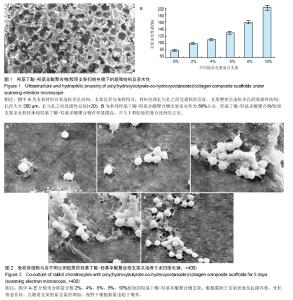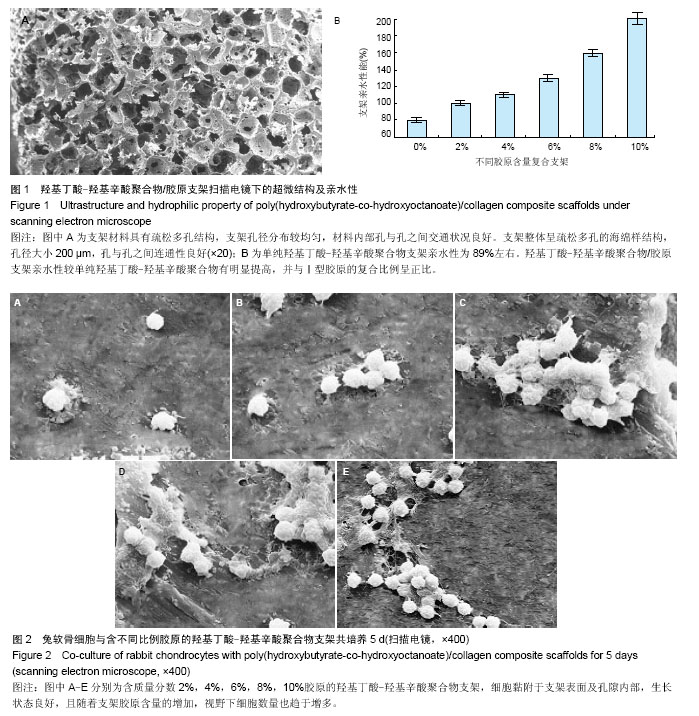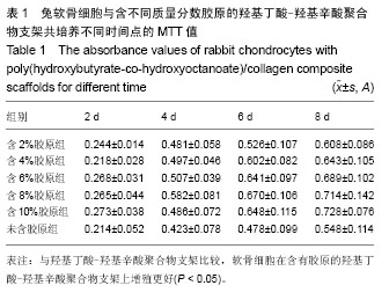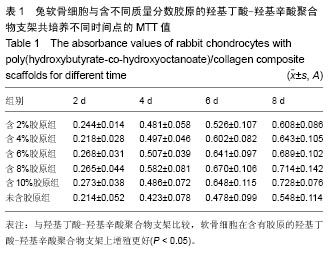| [1] 陈竹生,吕玉明,张兵.纳米β-磷酸三钙/Ⅰ、Ⅱ型胶原层状支架复合骨髓间充质干细胞修复膝关节骨软骨缺损[J].中国组织工程研究与临床康复,2010,14(42):7797-7801.
[2] Kerker JT,Leo AJ,Sgaglione NA.Cartilage repair: synthetics and scaffolds: basic science, surgical techniques,and clinical outcomes.Sports Med Arthrosc.2008;16(4):208-216.
[3] 董岳峰,谢红,郭羽,等.新型支架材料羟基丁酸与羟基辛酸共聚体的生物相容性[J].中国组织工程研究与临床康复,2008,12(10): 1870-1872.
[4] 张蝉,董岳峰,王海宾,等.费氏中华根瘤菌合成羟基丁酸和羟基己酸共聚体的研究[J].微生物学通报,2007,34(6):1077-1081.
[5] 杜江华,杨青芳,张楠楠,等.聚羟基丁酸酯支架在组织工程中的应用[J].中国组织工程研究与临床康复,2006,10(37):114-116.
[6] 吴俊,孙俊英,李海燕,等.以PHBV为支架构建组织工程化软骨[J].中国矫形外科杂志,2006,14(13):1016-1018.
[7] 张玲,敖强,贺庆,等.聚羟基丁酸己酸酯/聚碳酸亚丙酯共混材料作为血管组织工程支架的性能特征[J].中国组织工程研究与临床康复,2007,11(35):6950-6953.
[8] Lee CH,Singla A,Lee Y.Biomedical applications of collagen.Int J Pharm.2001;221:1-2.
[9] Temenoff JS,Mikos AG.Review: tissue engineering forregeneration of articular cartilage.Biomaterials. 2000;21(5): 431-440.
[10] 张永红,许钰,林汲,等.羟基丁酸-羟基辛酸共聚体/脱细胞软骨基质支架的细胞黏附性[J].中国组织工程研究与临床康复,2010, 14(25):4585-4588.
[11] 朱艳霞,宋克东,文鹏飞,等.体外培养脂肪组织来源干细胞与胶 原/壳聚糖复合支架的亲和性[J].中国组织工程研究与临床康复, 2007,11(31):6155-6160.
[12] 徐成峰,胡大海,赵周婷,等.兔骨髓间充质干细胞体外分离培养及多向诱导分化[J].中国组织工程研究与临床康复,2010,14(6): 1002-1005.
[13] 许圣荣,赵劲民,苏伟.骨髓间充质干细胞向软骨细胞分化的实验研究[J].广西医科大学学报,2010,27(5):657-660.
[14] 张厚安,李 敏,唐思文.骨组织工程用细胞支架生物材料的研究进展[J].机械工程材料,2007,31(12):4-7.
[15] 秦胜男,陈鸿辉.胶原在软骨组织工程中的应用[J].中国矫形外科杂志,2009,17(13):998-1000.
[16] 李二峰,王增荣,陆兴,等.羟基丁酸-羟基辛酸聚合物-胶原骨软骨支架的制备及应用[J].中国组织工程研究,2012,16(47): 8751-8754.
[17] 刘耀升,刘蜀彬,李鼎锋.软骨组织工程研究中的刺激因子[J].中国组织工程研究与临床康复,2009,13(15):2951-2954.
[18] 初殿伟,王玮,陈立军,等.兔骨髓间充质干细胞/壳聚糖-胶原支架复合体构建软骨组织工程支架[J].中国组织工程研究与临床康复,2009,13(42):8248-8252.
[19] Kramer J,Hegert C,Guan K,et al.Embryonic stem cells derived chondrogenic differentiation in vitro: activation by BMP 22 and BMP 24.Mech Dev.2000;92:193.
[20] 林荔军,李奇,靳安民,等.胶原酶消化分离关节软骨种子细胞的优化获取[J].中华创伤骨科杂志,2004,6(2):760-762. |



